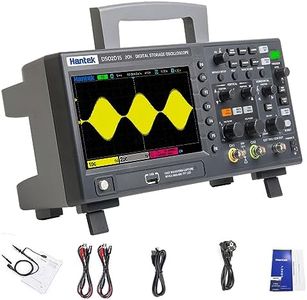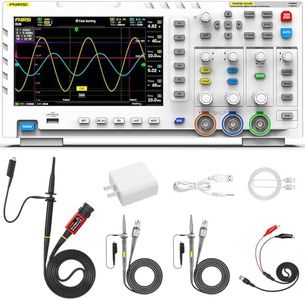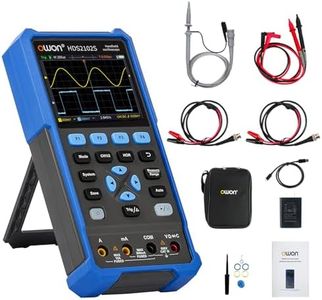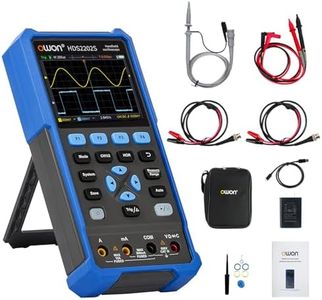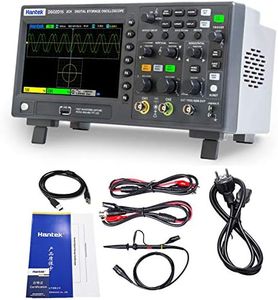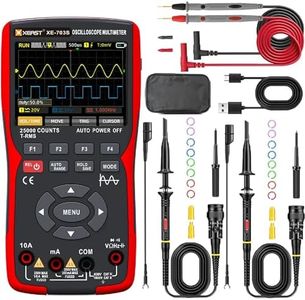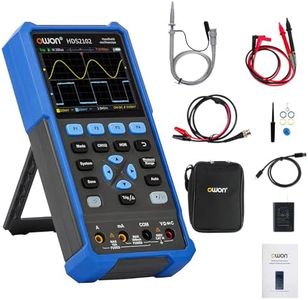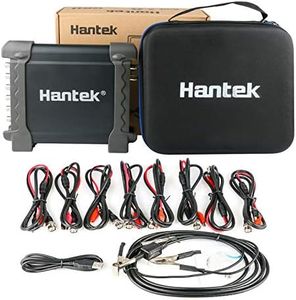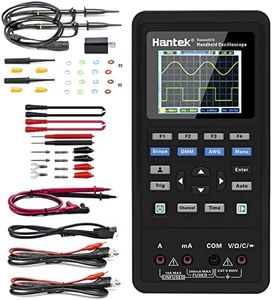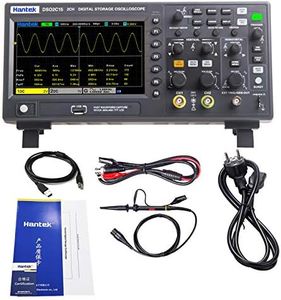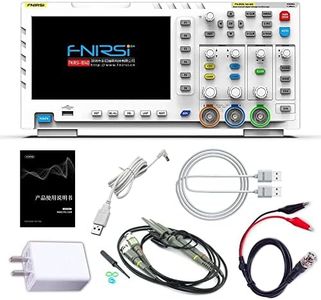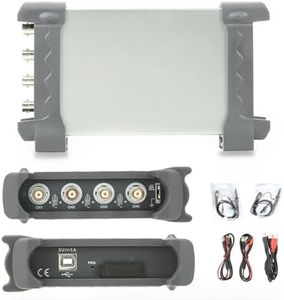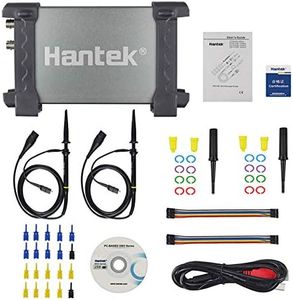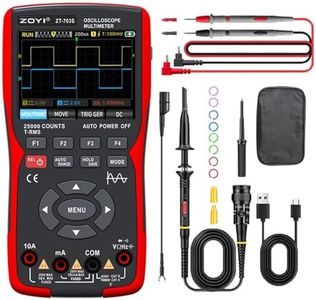We Use CookiesWe use cookies to enhance the security, performance,
functionality and for analytical and promotional activities. By continuing to browse this site you
are agreeing to our privacy policy
10 Best Digital Oscilloscopes
From leading brands and best sellers available on the web.Buying Guide for the Best Digital Oscilloscopes
Digital oscilloscopes are specialized electronic instruments used to visualize and measure electrical signals. They let you see how voltages change over time, making them essential for testing, troubleshooting, and designing circuits in electronics, engineering, and education. To choose the best digital oscilloscope for your needs, it’s important to understand the main specifications and what roles they play, so you can match the features to your applications—whether that's simple electronics tinkering, in-depth circuit diagnosis, or advanced research.BandwidthBandwidth refers to the range of frequencies that the oscilloscope can accurately measure. It's important because it determines the type of signals you can view without distortion or loss of detail. Bandwidth values are usually given in megahertz (MHz) or gigahertz (GHz). For basic electronics work, a lower bandwidth (around 50–100 MHz) might be enough, but for faster digital circuits or radio-frequency projects, you’ll want a higher bandwidth (like 300 MHz or more). To choose the right bandwidth, think about the highest frequency of the signals you'll be measuring—ideally, your oscilloscope's bandwidth should be at least five times higher than the signal's highest frequency.
Sample RateSample rate is the number of times per second the oscilloscope takes a snapshot of the signal, usually described in samples per second (Sa/s). This is important because a higher sample rate means you can capture more detail from fast-moving signals, helping you see sharp edges or brief events. Sample rates are usually categorized into millions (MSa/s) or billions (GSa/s) of samples per second. For slow signals, a lower sample rate may be sufficient, but for digital or high-speed applications, you’ll want a very high sample rate. Try to pick a sample rate at least ten times higher than your signal’s highest frequency for accurate results.
Number of ChannelsChannels refer to how many separate signals you can view at once on the oscilloscope. Two channels are common and allows you to compare signals side by side. Four channels give you even greater flexibility for working with more complex circuits or timing relationships. Decide how many different signals you’ll want to observe at the same time—if you’re mostly working with simple circuits, two channels will do, but for debugging multi-signal systems or more advanced projects, more channels can save a lot of time and hassle.
Memory DepthMemory depth is the amount of data the oscilloscope can store per channel. A larger memory depth allows you to capture longer time periods without losing signal detail. This is important if you want to analyze detailed or long-duration signals. Memory depth can range from a few thousand to several million points. If you need to zoom in on fine details or capture rare events over long periods, go for higher memory depth, while for simpler measurements, less memory may suffice.
Display Quality and SizeThe display is where you see the signals and navigate the oscilloscope’s functions. A clear, bright, and adequately sized screen can make analysis much easier, especially if you spend long hours using the device. Displays can range from basic, small monochrome screens to large, crisp color screens with touch capability. For lab work or frequent use, a larger and higher-resolution display makes work more comfortable and lets you spot details more easily, while for occasional or field use, a smaller display may be adequate.
Connectivity and Data ExportConnectivity options let you transfer data from the oscilloscope to a computer or other devices. Common connections include USB, LAN, and sometimes Wi-Fi or SD card slots. This is important if you need to save, analyze, or share measurement results. Consider your workflow: if you want to document findings or use advanced analysis on a PC, make sure the oscilloscope supports your preferred connection methods.
